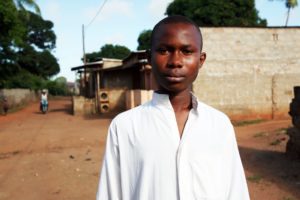HIV incidence among adolescent girls and young women is 44 percent higher worldwide than among their male counterparts. Thus, this demographic has been the focal point for HIV prevention initiatives while adolescent boys and young men have been relatively overlooked.
For a chapter of the textbook Adolescents, Young People and HIV Prevention in Eastern and Southern Africa, CUNY SPH Associate Professor and ISPH Investigator Elizabeth Kelvin and colleagues reviewed the literature on HIV prevention among adolescent boys in sub-Saharan Africa. The researchers found numerous gaps in the research including a general lack of gender and age-stratified statistics, fewer sexual and reproductive health services for adolescent boys compared to girls of the same age, which are often linked to pregnancy-related health (pregnancy prevention or prenatal care), lack of research among adolescents in general (boys and girls) due to consent challenges, and little research on contextual factors that likely impact risk behavior.
Kelvin says adolescent boys and men must be part of the solution to interrupt the cycle of HIV transmission. Even though boys and men are at lower risk than girls and women for HIV acquisition, they are still at risk due to their sexual behaviors. As adolescent boys grow older, their risk of HIV exposure and transmission increases.
“Since gender socialization occurs during early adolescence, it is important to target boys to engender sexual health and equitable gender norms,” says Kelvin. “Adolescent boys and young men must be actively engaged in HIV prevention interventions that have optimal impact, documenting unmet prevention needs, and outlining an onward blueprint for research.”
